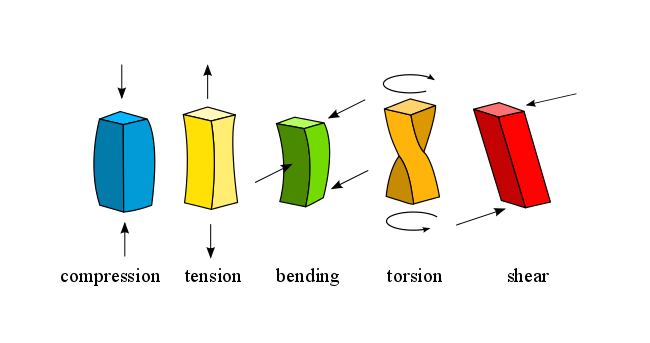Force Diagrams
Engineering
Force diagrams are more than required physics material: they’re the backbone of civil and mechanical engineering. Let’s consider one example.
Imagine building a bridge without analyzing the forces placed upon it, and upon its foundation? Disaster in the making, right there. Forces have to balance out from the top all the way to the bottom, or the whole thing might collapse.
Here’s a bridge. 

The forces put onto the bridge itself are the forces from the pieces of the bridge itself. Ignoring the force of gravity and normal force as the diagram does, inspect the forces on the pieces of the bridge as a chain reaction of forces from the top on down. See that? The keystone presses outward, as the unmarked gravity pulls it down. The footers and abutments ensure that the pieces on top can’t fall. The top pushes outward, but the bottom pushes inward and the structure stands, supported by balanced forces. The force of gravity and normal forces also balance each other, even though they’re not drawn in here.
Among other things, civil and mechanical engineers also consider how different placements of forces affect materials. In a bridge, say, or furniture, a building, or vehicle the materials and overall structure need to be strong enough to withstand all of these kinds of force applications, which may occur from people, wind, earthquake, car accident, traffic, etc. Obviously, it depends on the structure, whether bridge, building, vehicle, or something else.

A compressing situation occurs whenever there’s force from above and below, which causes compression on any kind of material. Some kinds of materials withstand compression better than others. You wouldn’t want to build a skyscraper out of plastic, for example, because it would substantially compress under its own weight. Stainless steel and reinforced concrete do nicely, though.
Tension occurs whenever there’s an unsupported surface. A ceiling is under tension, a floor not on the ground level, bridge cables, the bridge surface itself… all have tension. Once again, engineers choose their materials wisely.
Bending and torsion are two more unavoidable concerns for engineers. Imagine if the floors we walk over bent because of it: that would be an engineering failure. Or if we could rip doors off their hinges because of pushing high from the outside and low from the inside, causing torsion? Lastly, skyscrapers experience sheer forces in the wind because wind speeds are larger, the higher up from the ground. All kinds of things cause sheer forces, not just unexpected windstorms.
Engineers compile tables of information comprising the strength of thousands of kinds of materials under these five force combinations. Then, they use that information in their calculations to ensure they don’t jeopardize lives and investments. Wise.